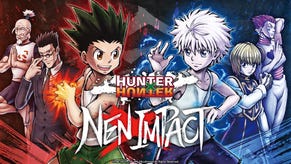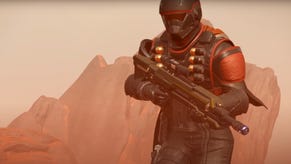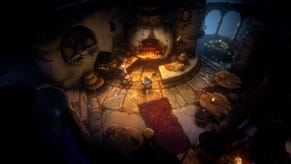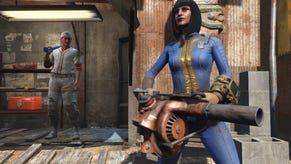Halo 4 multiplayer test: a lesson in respect
Halo 4 delivers a vast multiplayer offering. Size isn't everything however, so VG247's Dave Cook puts 343's online components to the test to see if they stack up with the series' legacy.
Want our Halo 4 campaign impressions as well? See what we thought here.
They say that you should never s**t where you eat. For 343 Industries, failing to deliver anything less than an exceptional multiplayer component in Halo 4 would have resulted in quite a big mess indeed.
If the studio stumbled, then the fan fallout would have been catastrophic. Microsoft clearly knew this, so you can take solace in knowing that the publisher's faith in 343 was well-placed, and that this is a solid multiplayer offering.
Say you're 343 approaching the mammoth task of continuing Bungie's legacy: do you reinvent, refine, or scale back the experience? What needed fixed? What should have been left alone? What would fans hate? What would fans love?
When you start to think about these questions the puzzle grows larger and harder to solve, and that is why the developer has opted for the subtle touch. This isn't a sea change of ideals, but a cautious and accomplished extension of the template you know and love.
Rest assured, Halo 4's multiplayer component - dubbed 'Infinity' - is vast, and is broken down into four main components: War Games, Spartan Ops, Forge and Theatre. Before launching into PvP, let's talk about co-op campaign Spartan Ops.
Ensuring that Halo 4's co-op is no mere side-show, 343 has pledged an episodic Spartan Ops campaign that will see new chapters added each week from the game's launch. It's a huge undertaking, and the digestible nature of each chapter makes it fun to dip in and out of with friends.
"If there is one criticism to be levied at Spartan Ops it’s that some chapters in the initial episode feel short, even for an episodic content stream like this. It’s a minor criticism, given that we’re yet to see the full extent of what 343 will offer post-launch.”
Set six months after the end of Master Chief's story campaign, Spartan Ops is broken down into episodes that tell the ongoing story of Fireteam Crimson. They're a cocky group of Spartan-IV troops assigned to the Forerunner planet Requiem, tasked with mopping up Covenant stragglers.
Mission objectives aren't especially inspired, as you run around disabling power generators and shields among a tidal wave of enemies. That said, the volume of Covenant threats is well-suited to four player co-op, and there's no shortage of vehicles and firearms with which to cause carnage.
When you die – and you will, make no mistake – you go back to the last spawn point, which keeps pushing forward as you do, similar to Battlefield's Rush mode. This advancement gives your squad a real sense of progression as they inch closer to their goal with each spawn. It's rewarding to say the least, especially on Heroic difficulty or above.
Progression is also driven by XP challenges exclusive to Spartan Ops. Killing a set number of a particular enemy type will dole out experience rewards that level up your PvP Spartan, so there is a certainly a broader incentive for playing Spartan Ops.
If there is one criticism to be levied at Spartan Ops it's that some chapters in the initial episode feel short, even for an episodic content stream like this. It's a minor criticism, given that we're yet to see the full extent of what 343 will offer post-launch.
War Games is where you'll likely spend most of your time with Halo 4 online. The idea is that the UNSC Infinity plays home to a virtual training area for Spartan-IV recruits, and that this is where all of your matches take place.
The fundamentals of Halo 4's control were always going to be a cause for concern among fans, but there is absolutely nothing stopping you from buying Halo 4 on day-one, diving right into multiplayer, and picking up where you left off in Halo 3.
Both games feel identical at base level and again, this makes sense, because to change what makes Halo feel so unique in a sea of also-rans would have been suicide. 343 has chosen to build on this foundation, and the biggest change is your Spartan-IV's load-out.
”It's key to stress that Tactical Packages don’t appear to unbalance gameplay, but only when the game is at the mercy of the masses will we find out if any of them need patched. There is a still a sense that ‘gun-on-gun’ gameplay is king, and that aiming and skill are Halo 4′s law.”
Spartans now have more tools and armour abilities at their disposal, as well as new Support Upgrades and Tactical Packages. These are essentially perks that augment your Spartan's abilities and gear- from quicker reload and increased clip size, to unlimited sprint to faster shield recharge.
Rather than rely on pre-set classes, Halo 4 gives you free reign over every equipment slot. Each time you rank up you will unlock more gear, which is bought with Spartan Tokens that are dispensed per level. Again, similar to Spartan Ops, you always feel like you're being rewarded.
You still can't assign power weapons to your load-out, so big chunky firearms like the Fuel Rod Gun are still only ever found within maps. However, there is a Tactical Package that lets you equip two primary weapons in one load-out should you wish to increase your firepower a little.
It key to stress that Tactical Packages don't appear to unbalance gameplay, but only when the game is at the mercy of the masses will we find out if any of them need patched. There is a still a sense that 'gun-on-gun' gameplay is king, and that aiming and skill are Halo 4's law.
Grabbing power weapons to tip the scales requires you to run into open spaces, so there is an element of risk reward. Another method of getting a boost without sticking your neck out is to call in an Ordinance Drop.
Rack up enough kills and you will be able to select from one of three randomly cycled power weapons and Tactical Packages. Once selected, an Ordinance Drop falls from orbit containing your item.
Your random choices can include anything from temporary overshields or speed boosts, to Promethean weaponry or a Needler, but the point is that your three choices are random, keeping exploitation to a minimum.
It's sort of like a killstreak reward from Call of Duty, but it doesn't f**k the competition to the point of rage-quitting, plus your drop only lasts for one life. Die, and you lose your reward, and its important to remember that enemies can also steal your capsule too, so you have to grab it quick.
In addition to all of this new gear, Armour Abilities have returned along with a few new additions. Jet packs are still insanely fun, while Hard Light Shields give you temporary, yet degradable cover.
The Booster Pack lets you dart around in bursts, although you are vulnerable at the end of each sprint, and by and far the best addition is Promethean Vision, a skill that highlights enemies on your visor.
"While it might not be a huge shift in terms of handling or design, Halo 4 is a welcome return to form, and proves that 343 has the skill and focus to give long-time fans what they expect from the franchise.”
As Promethean Vision works through walls, there was a real danger that this could have been a balancing disaster – Halo 4's own 'Ghost Pro' – but 343 has handled it well by restricting its use to around three seconds at a time.
It also takes ages to recharge, so it's useful as a quick radar ping to get your bearings, or to detect nearby threats. Tapping it on and off quickly is the key to using effectively. The point is that none of Halo 4's gear, weapons or abilities are perfect. They're expertly balanced.
But what are toys without a massive pram to throw them around in? Halo 4's maps are the typical of Bungie's symmetrical arenas of old, and rather than deliver sprawling environments with barren areas, 343 has opted for focus and verticality here.
Take the map Complex for example: it's a twisting science facility full of walkways, ramps and rooftops. It's large, but the surrounding forest areas are scaled in to create a tight border around the construct. It still doesn't feel small however, as the wealth of routes, vertical platforms and rooms all make for a dense, cleverly-designed play space.
The same goes for Abandon, which takes place within another science facility located on a dark – and very purple – alien planet. It's not colossal, but it looks different to other maps in the series, and is full of twisted vines that hamper visibility, as well as many floors and walkways to explore..
But then no Halo game would be complete without big maps, and 343 has proven that it can design environments to match Bungie's efforts. For example, Ragnarok is a superb re-imagining of Halo 3's Valhalla, complete with a new Mantis mech to fight over.
There are no dud maps here, and with more unlockables, greater freedom to tweak your Spartan and a slew of returning game modes – including the new infection-based Flood Mode – Halo 4's PvP element is vast. Thanks to inevitable DLC streams, it's only going to get bigger post-launch.
Halo 4's multiplayer component is proof that studios don't need to re-write the rules to create something that feels fresh. There are many small little changes running throughout the experience that, when combined, make for a balanced and thoroughly enjoyable experience.
While it might not be a huge shift in terms of handling or design, Halo 4 is a welcome return to form, and proves that 343 has the skill and focus to give long-time fans what they expect from the franchise.
I'm still crap at it mind you.














.png?width=291&height=164&fit=crop&quality=80&format=jpg&auto=webp)






